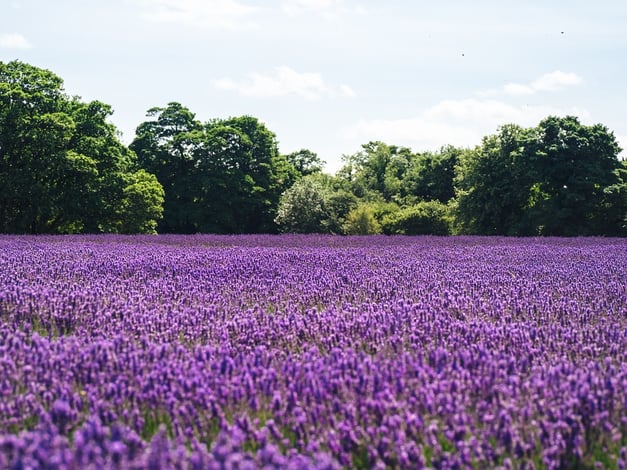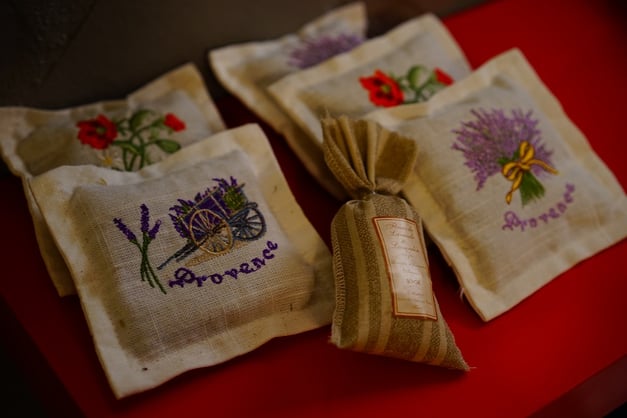
Like an impressionism painting, lavender fields bloom from June to early September in most gardens. Unique landscape not to be missed, blooming lavender fields look stunning and smell fantastic, among the most amazing ones are the Must-Sees lavender fields in Provence, South of France. This blue and gold flower has been used for ages to make soap, cosmetics, aromatherapy and in cooking, but lavender does so much more than just that!
A blue gold
A Mediterranean native, the lavender was already used in ancient Greece and Rome in perfumery to scent bath water with the blossoms. The name comes from a Latin word “lavare” meaning to wash. Lavender was also known as a medicinal plant in the Middle Ages used as a disinfectant and antiseptic. We mainly identify 2 kinds of lavender, the “true” one and the hybrid one, the lavender which is very popular for cosmetic use. Lavender growing is an ancestral activity, the major changes were brought by mechanisation and industrialisation in the early 20th century. Intensive cultivation, increase in productivity, improvements in quality, the result has been an economic opportunity that develop a huge business in the ‘wellness” activity with essential oil or in perfume industry with soaps, perfume and aromatherapy.

Lavender, a flower full of properties
This incredible little purple flower has been used for generations in so many ways to scent clothing or a an antiseptic, painkiller, antibacterial, preventing infection and is famous for its calming effects, making it a must-have plant to have in your own garden or balcony. Moreover lavender is very popular to perfume. Not convinced? Here are some of the properties of lavender and essential oil of lavender:
- Pain relief
- Aid sleep
- Mosquito repellent
- Improve blood circulation
- Improve digestion
- Aid depression
- Increase mental activity
- Ease migraines and headaches
- Cold remedy
- Soothe blemishes, cuts, sunburst and bruises
Did you know?
- Lavender oil or essential oil is extracted by steam distillation from the fresh flowering tops
- Harvesting the lavender for oil must be done at the peak of the day’s heat
- 99% of the hybrid lavender (the lavender) is produced in France
- It takes 2-3 weeks to dry a bunch of lavender
- Lavender is very popular in cooking, with honey, nougat, tea for example
Create your own lavender sachet
Dried lavender buds can be crushed and made into sachets making pretty, scented gifts to pop in a drawer to keep your clothes smelling nice or used whole for a potpourri. Rub the heads of dried bundles between your hands, collect the blossoms on a plate or a clean surface. Sift the brown flower bracts out of the mixture leaving only the purple fragrant bulbs. Put them in a nice sachet and close it with a purple ribbon! You can also let your lavender dry about 2-3 weeks until there is no moisture on the stems in the centre of the bundle and use it as a dried floral bouquet.






